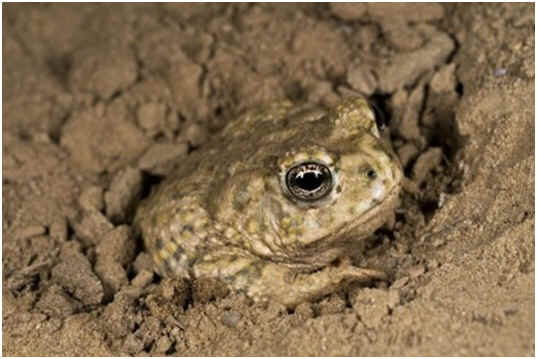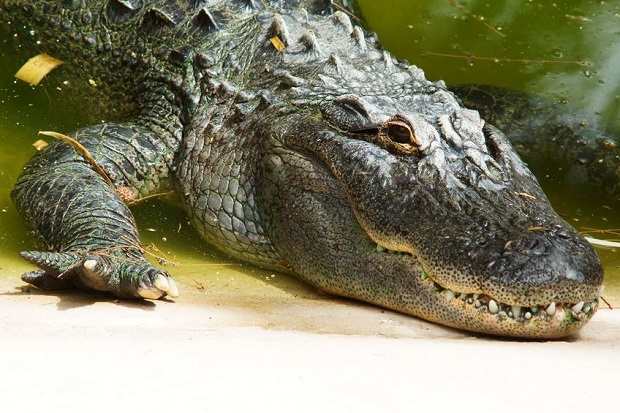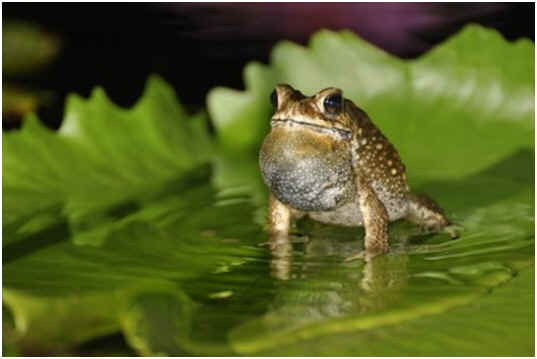
Do Toads Hibernate?
Toads do hibernate. Dropping temperatures signal that it’s time to find a hibernaculum for ectothermic toads. As the temperatures begin to drop, so does the toad’s body temperature, which results in slowed body functions such as heart rate and respiration. They are not freeze-tolerant and will die if they become too cold.
Where Do Toads Hibernate?
Though toads require water to breed, they are terrestrial creatures regarding hibernation. They often choose hibernacula for its convenience. Former shelters of other animals often become hibernating spots, such as red squirrel middens, abandoned beaver lodges, and common muskrat tunnels. Other spots that offer suitable shelter to hibernating toads include peat hummocks, decayed root tunnels, and natural crevice systems. For example, one Canadian study found that 53-79% of the Western toads studied hibernated in spruce-dominated tree stands. Toads also hibernate communally. In the same Canadian study of Western toads, researchers discovered that 68% of hibernacula are communal. [1]
When Do Toads Come Out of Hibernation?
In most amphibian species studied, warmer temperatures are the cue for emergence from hibernation. Some species seem to emerge with rains, but researchers have suggested that this may be because the rain thaws the frost line below which many hibernacula are located. [2] Once they emerge, thawing begins immediately.
Thawing of the toad’s body occurs simultaneously, but the major organs that have received high concentrations of cryoprotectant will thaw more quickly than the rest of the body. Vital bodily functions such as respiration and heartbeat will generally resume within a few hours after thawing. [3]
Hibernation Mortality
Several studies have indicated that the survival rate of amphibians during hibernation is relatively high but depends on several conditions. The length and severity of the winter will factor into how many toads will survive until warmer weather rolls in. The toad’s choice of hibernacula will also dictate its chances for survival. For example, if the toad can find deep, subterranean passages in which to hibernate, it will be able to withstand a harsher winter better than a toad that has burrowed beneath the frost line. [4]
Resources
[1] Journal of Herpetological Conservation and Biology; Constance L Browne
Hibernation sites of Western toads (Anaxyrus Boreas): characterization and Management Implications
2010; Volume: 5; No: 1; Pages: 49-63
[2][4] Feder, Martin E..
Environmental physiology of the amphibians
Chicago [etc.: University of Chicago Press, 1992. Print.
http://books.google.com/books?id=oaS-OpEjPtUC&pg=PA264&dq=frogs+come+out+of+hibernation&hl=en&sa=X&ei=7cb_UfP7LrPc4AOmxoCgAg&ved=0CE8Q6AEwBA#v=onepage&q=frogs%20come%20out%20of%20hibernation&f=false
[3] Journal of Climate Research; Jack R. Layne, Jr
Adaptations of frogs to survive freezing
1995; Volume: 5; Pages: 53-59
http://www.int-res.com/articles/cr/5/c005p053.pdf
Kentwood D. Wells
The Ecology and Behavior of Amphibians
Chicago: University of Chicago Press, 2007. Print.
Heldmaier, Gerhard, and Martin Klingenspor.
Life in the cold: Eleventh International Hibernation Symposium.
Berlin: Springer, 2000. Print.
Glossary of Terms
Cryoprotectant: a substance that is used to protect biological tissue from freezing damage
Wikipedia
Glycogenolysis: process by which glycogen, the primary carbohydrate stored in the liver and muscle cells of animals, is broken down into glucose to provide immediate energy and to maintain blood glucose levels during fasting. Glycogenolysis occurs primarily in the liver and is stimulated by the hormones glucagon and epinephrine (adrenaline).
Hibernacula: The shelter of a hibernating animal
Midden: a small pile (as of seeds, bones, or leaves) gathered by a rodent (as a pack rat)
Merriam-Webster Dictionary





